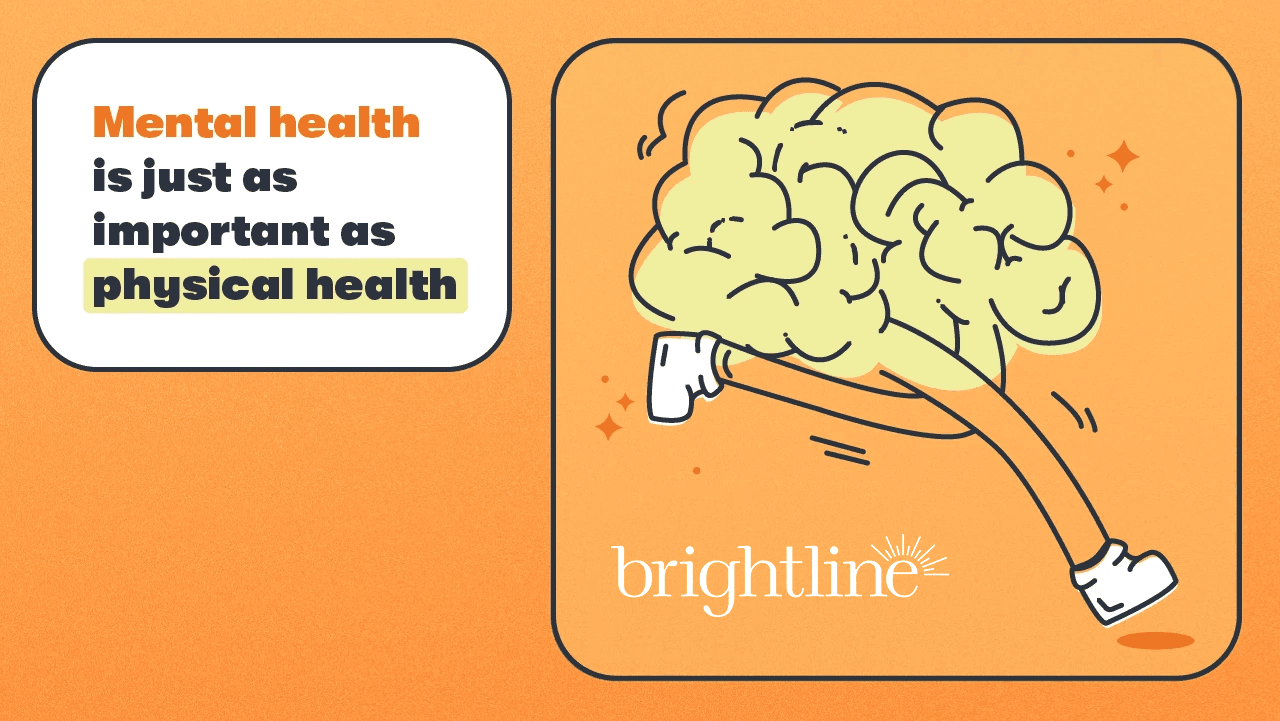
Therapy vs. Coaching: Which one is best for kids and families?

By Brightline team, Sep 1, 2022
Talking openly about mental health might not always come easy to your family. Maybe you didn’t have these kinds of conversations when you were younger, or you aren’t sure when or how to bring it up (or what to say!).
Brightline is here to help you talk about mental health with your kids in a compassionate, supportive, and nonjudgmental way.
Even though mental health struggles are common, many can feel alone in their experience. And unfortunately, youth mental health has only been getting worse over time. According to Mental Health America, “not only are the number of youth searching for help with their mental health increasing, but throughout the pandemic, youth ages 11-17 have been more likely than any other age group to score for moderate to severe symptoms of anxiety and depression.”
While the pandemic is behind us, there are lingering effects, especially for kids. They continue to struggle with the opportunities they lost — to socialize, build independence, and develop skills.
So, even when it feels intimidating or overwhelming, it’s more important than ever to have open, honest, empathetic conversations.
Let’s begin by taking a look at how stigma can keep kids from sharing, and the many ways you can help the young people in your life feel safe and supported.
How does stigma play a role?
Compared to previous generations, kids today are definitely more open with their mental health, particularly with their peers, but the stigma and barriers to seeking support still exist.
Some kids are hesitant to bring their concerns up with parents or caregivers because they:
Aren’t sure how they’ll react
Don’t want to add stress or be a burden
Worry their feelings will be labeled as lazy or unmotivated
Fear their parent/caregiver won’t take them seriously
You can create a home environment where emotions are discussed openly and without shame with any important young person in your life. Acknowledging the stigma (while letting them know that it’s safe and they are welcome to share) can help make your child feel more comfortable talking honestly about what they’re going through.
Here are nine ways you can help open the conversation:
1. Share your own feelings.
When you model that emotions are common and that talking about them is healthy, a young person will be more likely to feel comfortable opening up. If you’re experiencing extreme sadness, anxiety, or anger, make sure you have your own coping strategies in place as well. Sharing those high or raw emotions while you’re in the midst of them can be overwhelming for young kids.
2. Talk together about mental health (at their level).
Kids listen to what you say and watch what you do. If you are minimizing someone’s struggle — or sweeping their experience under the rug altogether — you’re modeling that being open about it also opens you up to criticism. This can contribute to shame and stigma, and teach your child that they should keep their feelings inside. Instead, talk about mental health concerns as they come up in your family, in the community, or even in the news. A reference to someone they admire might be a good start — many athletes, influential leaders, and celebrities have begun talking about how important supporting mental health is.
3. Encourage them to open up, too.
In addition to modeling open conversation about mental health, tell your child directly that you are there to listen. Reinforce that talking about what they’re feeling, even when it’s hard, embarrassing, or uncomfortable, is a healthy part of life.
4. Understand the role of sibling dynamics.
If they have any siblings, be aware of the relationship dynamics when it comes to mental health. Each of your children is unique and where one struggles, another may thrive (and the other way around!). Ask them to lift one another up, encourage each other, and be there for each other when they’re feeling down. Teach values like empathy and kindness at home.
5. Start small.
When talking about difficult emotions, it can be helpful to start with shorter conversations, especially if you notice they seem agitated or uncomfortable. Try asking a couple of open-ended questions in the car, while tidying up after dinner, or before bedtime when your child is relaxed. If it’s brought up more casually, it has less risk of feeling intimidating or giving off that “let’s sit down and have a talk” vibe.
6. Try calming techniques.
These are great to teach your child so they (and you!) can use them anytime self-regulation is a goal. Try doing breathing exercises with them before or after tough conversations, or during if intense feelings come up and they need a break. You can also build up their coping skill toolkit with movement (stretching, walking, jumping rope, etc.), drawing, or visualizing their feelings as a wave that comes and goes.
7. Be present.
When you have these conversations, it’s important to be fully present. Phones go in the other room and the television is turned off. (If music helps the mood, have it on in the background but not as a distraction.) Listen attentively to what they’re sharing, be curious, and give them space to say and feel whatever is coming up for them.
8. Respect their boundaries.
If they don’t want to share their experience right away, respect their choice. Be patient. Let them know that you’re there for them when they are ready to talk. Keep trying to bring it up and keep sharing your feelings openly. Remind them that you’re a safe space for them.
9. Let them know that support is always available.
It sounds obvious, but just hearing that you have their back, and that support is available to get them through it, is valuable. If your child is old enough to understand, let them know that they have options. They can have therapy, psychiatry, mental health coaching, or conversations with trusted adults like teachers or guidance counselors. If they’re younger, let them know you will get them the help they need (and that everyone needs help sometimes). No matter how old they are, emphasize that they’re never alone, they matter, and they are loved.
For more resources on how to talk to kids and teens about mental health, sign up for a free Brightline Connect account and check out the Family Mental Health Collection here. As always, Brightline is here for you.